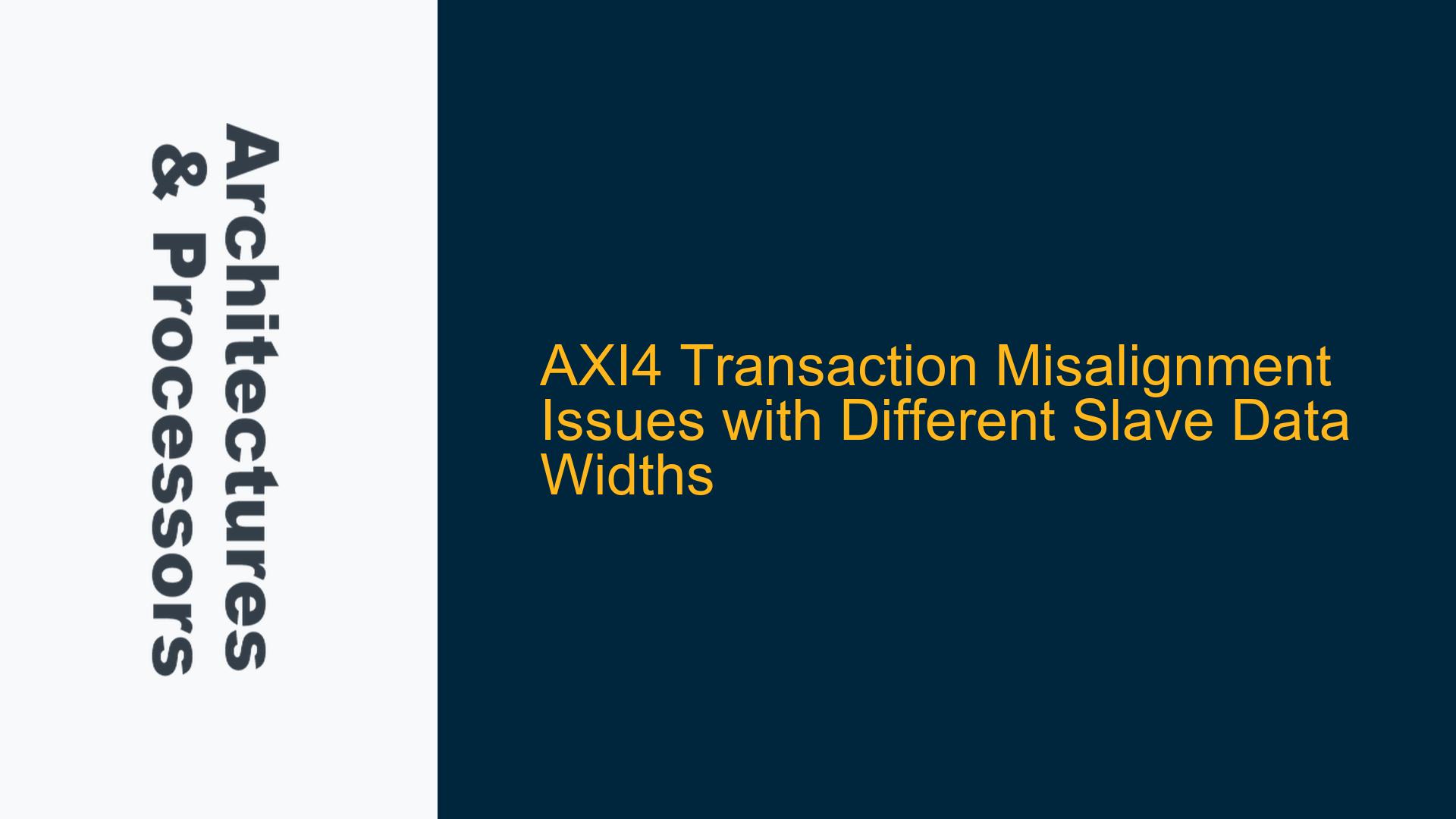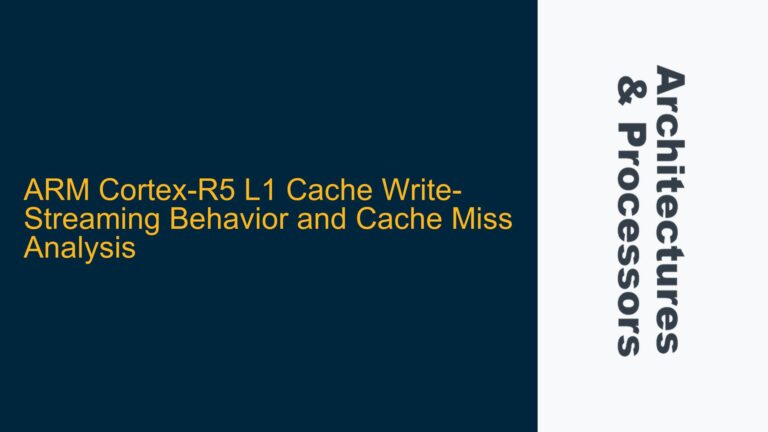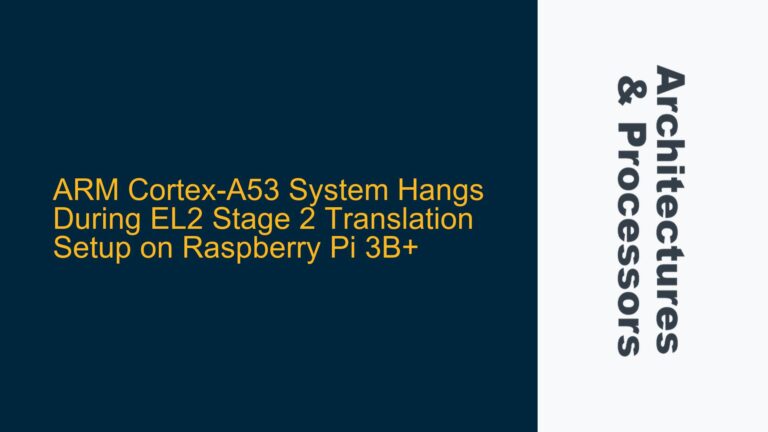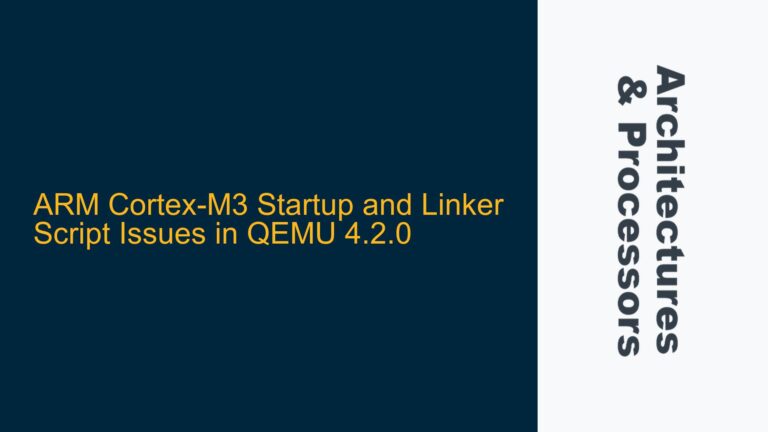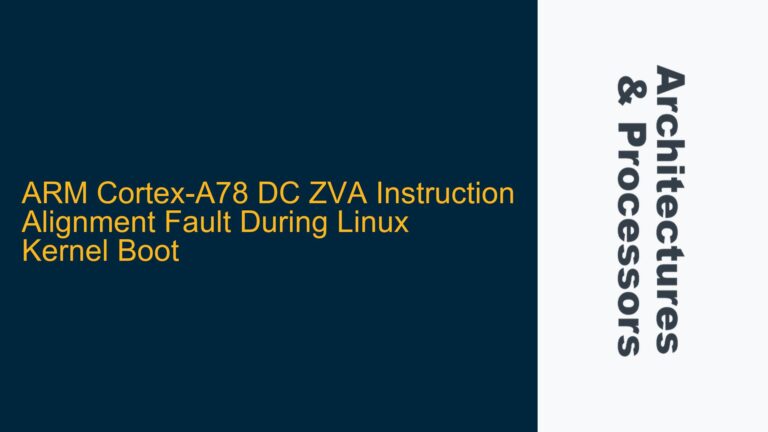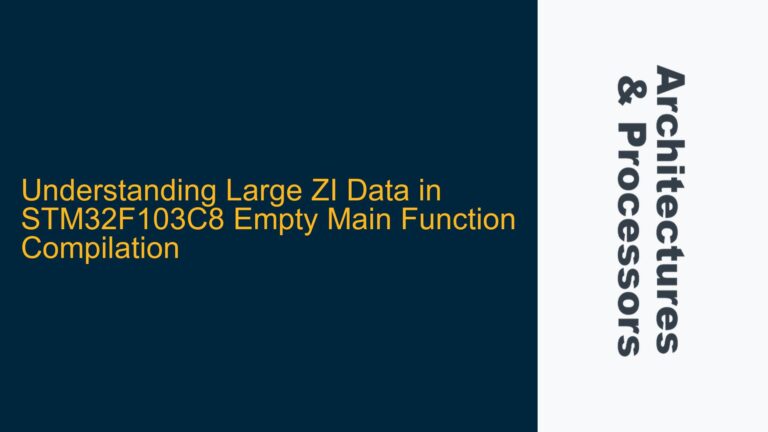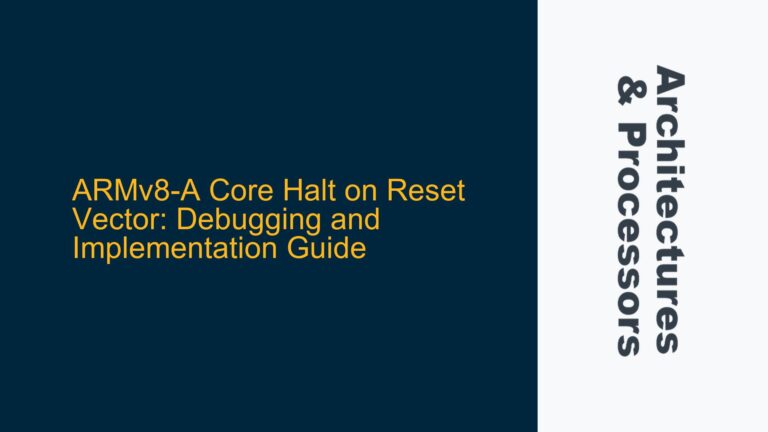AXI4 Master-Slave Data Width Mismatch and Unaligned Transfers
In the context of ARM-based SoC designs, the Advanced eXtensible Interface (AXI) protocol is widely used for high-performance on-chip communication. One of the common challenges faced during AXI4-based system integration is handling transactions between masters and slaves with different data widths. This issue becomes particularly complex when dealing with unaligned transfers, where the address boundary does not match the natural alignment of the data width.
The AXI4 protocol defines a set of rules for address alignment and data transfer sizes, but the interpretation of these rules can vary depending on the data width of both the master and the slave. For instance, a 32-bit AXI master initiating a write transaction to an 8-bit slave at an unaligned address (e.g., 0x00000002) raises questions about how the transaction should be handled. Should the transaction be split into multiple smaller transfers to accommodate the narrower slave data width? Or should the transaction proceed as-is, potentially leading to data corruption or protocol violations?
The core of the problem lies in the interaction between the AXI master’s transaction parameters (such as AWADDR, AWSIZE, and AWLEN) and the slave’s data width. The AXI master typically specifies the transfer size in terms of its own data width, but the slave may interpret the transaction differently based on its narrower or wider data width. This mismatch can lead to incorrect data being written to or read from the slave, or even protocol violations if the transaction is not handled correctly by the interconnect or bridge logic.
Furthermore, the concept of an "unaligned transfer" is relative to the data width of the master, not the slave. This means that a transaction that is considered aligned from the master’s perspective may be unaligned from the slave’s perspective, and vice versa. This discrepancy can cause confusion during system integration and verification, especially when dealing with peripherals or memory-mapped devices with varying data widths.
Master-Slave Data Width Awareness and Transaction Interpretation
One of the key questions in this scenario is whether the AXI master is aware of the slave’s data width and address boundaries. In most cases, the AXI master does not have explicit knowledge of the slave’s data width or memory map. Instead, the master relies on the system interconnect or bridge logic to handle the translation and adaptation of transactions to match the slave’s characteristics.
The AXI protocol does not mandate that the master be aware of the slave’s data width. Instead, it provides mechanisms for the interconnect or bridge to handle data width mismatches. For example, an AXI-to-APB bridge may be responsible for converting a 32-bit AXI transaction into a series of 8-bit APB transactions when accessing an 8-bit peripheral. This conversion process involves splitting the AXI transaction into smaller chunks that match the slave’s data width and ensuring that the data is correctly aligned within the slave’s address space.
However, this lack of awareness at the master level can lead to inefficiencies or errors if the interconnect or bridge logic is not designed to handle the specific data width mismatch. For instance, if the AXI master initiates a 32-bit write transaction to an 8-bit slave at an unaligned address, the bridge logic must ensure that the data is correctly split and written to the appropriate byte lanes of the slave. Failure to do so can result in data corruption or protocol violations.
In some cases, the master may have implicit knowledge of the slave’s data width through software configuration or hardware design. For example, a processor accessing a memory-mapped peripheral may be programmed with the peripheral’s base address and data width, allowing it to generate transactions that are naturally aligned with the slave’s data width. However, this is not a universal solution and may not be feasible in all scenarios, especially when dealing with general-purpose system interconnects or third-party IP blocks.
Implementing Correct AXI4 Transaction Handling for Data Width Mismatches
To address the challenges of AXI4 transactions with different master-slave data widths, several steps can be taken during the design and verification phases. These steps involve careful consideration of the AXI protocol rules, the specific characteristics of the master and slave, and the role of the interconnect or bridge logic in handling data width mismatches.
First, the AXI master must be configured to generate transactions that are aligned with its own data width. This means that the AWSIZE parameter should match the master’s data width, and the AWADDR should be aligned to the natural boundary of the data width. For example, a 32-bit master should use AWSIZE=2 (indicating a 32-bit transfer) and ensure that the AWADDR is aligned to a 4-byte boundary (e.g., 0x00000000, 0x00000004, etc.).
Second, the interconnect or bridge logic must be designed to handle data width mismatches between the master and slave. This involves implementing logic to split wider transactions into smaller chunks that match the slave’s data width and to reassemble narrower transactions into wider chunks when necessary. For example, a 32-bit AXI transaction to an 8-bit slave should be split into four 8-bit transactions, with each transaction targeting the appropriate byte lane of the slave.
Third, the verification environment must include test cases that cover all possible combinations of master-slave data widths and address alignments. This includes testing unaligned transfers, where the AWADDR does not match the natural alignment of the master’s data width, as well as aligned transfers where the AWADDR is naturally aligned. The verification environment should also include checks to ensure that the data is correctly transferred between the master and slave, regardless of the data width mismatch.
Finally, the system software must be aware of the memory map and data widths of the various peripherals and memory regions. This allows the software to generate transactions that are naturally aligned with the target’s data width, reducing the burden on the interconnect or bridge logic. In some cases, the software may need to perform manual alignment or padding of data to ensure that it is correctly transferred to or from the target.
By following these steps, designers and verification engineers can ensure that AXI4 transactions are correctly handled in systems with varying master-slave data widths. This not only prevents data corruption and protocol violations but also improves the overall performance and reliability of the system.
